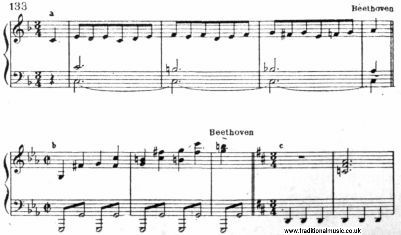EXTEMPORE PLAYING - online tutorial
40 Lessons in how to correctly play improvisations.
| Share page | Visit Us On FB |
|
100 Extempore Playing |
||
|
The note usually taken is the tonic or the dominant, or both together; but others are occasionally used.
The principle of the 'pedal' is that the note selected may be continued and sounded against any melodic or harmonic combination, whether consonant or dissonant; the only condition being that at its commencement and at its ending there must be a consonance. It may be used not only within the limits of the given key, but also when employing modulations to next-related, or even remote, keys; always remembering the regulation to return to the first key and to a concord before leaving the organ-point.
A simple organ-point is usually the tonic or dominant. When these are combined the result is called the 'pastoral' organ-point.
Cases of an organ-point continued through a whole movement are occasionally found. Consult Bach's Toccata in F for the organ, where the tonic is held in the bass continuously for the whole of the first section, and the dominant for the second. In the popular organ-piece 'Marche des Rois Mages' by Dubois the dominant is held throughout at a very high pitch—b3.
The keyboard student may now very well experiment with this valuable device, by means of which many interesting effects may easily be obtained. The following examples should first be studied: |
||
 |
||